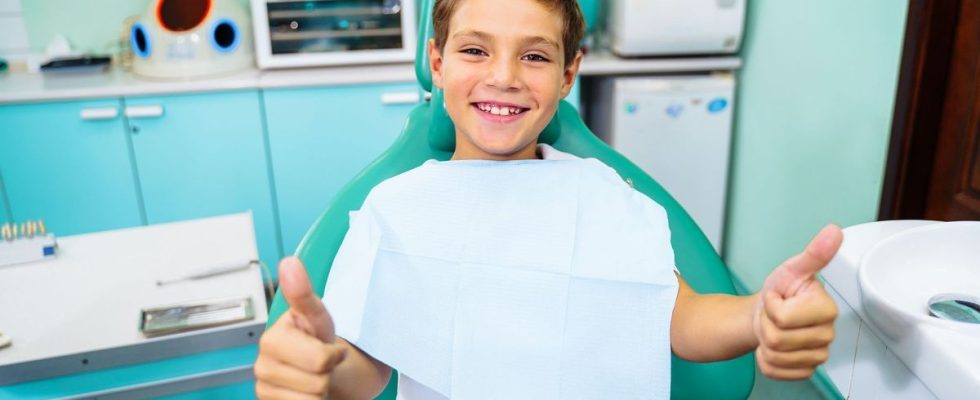Published on
Updated
Reading 2 mins.
On the occasion of World Orthodontics Day, the Syndicate of Orthodontic Specialists is organizing a whole week of free screening consultations for patients aged 7 to 9. Waiting for a later age has no advantage, according to specialists.
Thinking of waiting until college age for your child to go through orthodontics? Maybe you should review your health plan. Indeed, according to the union of orthodontic specialists, waiting until all the milk teeth have fallen out to start a correction is a received idea that does not have much advantage.
Between 7 and 9 years old, the right time to consult
Starting care as soon as possible is a winning attitude for everyone, and especially for the health of our children, as explained by Dr. Gérard Motto, orthodontist in Evreux and President of the SFSO.
“Contrary to popular belief about orthodontics, the earlier children are seen, the earlier functional and skeletal disorders can be diagnosed, if any. Similarly, the earlier we intervene, the more likely we are to minimize the treatment, which will undoubtedly be much faster than at 13-14 years old and will be based on simpler devices.
Starting orthodontic care between the ages of 7 and 9 is therefore possible. Information often overlooked by parents.
“It’s not always the case, it depends on the growth of each child, or the type of problem encountered, but more than half of orthodontic disorders are already diagnosable and treatable at this age. This often avoids long treatments, the need to extract teeth, and the additional cost of a treatment that lasts.”, confirms the expert.
Moreover, on the practical side, it often avoids looking for an orthodontist during adolescence.
A free consultation offered from May 15 to 20
To take stock of your child’s teeth and the possible care to be considered, a free consultation is therefore offered by partner orthodontists to all children aged 7 to 9, from May 15 to 20, 2023. A simple visit that does not nothing frightening for the child:
“This is a simple consultation during which the practitioner examines the child, his morphology, his teeth, the way he closes his mouth, swallows his saliva, breathes, or his habits (thumb sucking, etc.) to establish a first diagnosis.
A treatment can then be advised, or a visit, later, proposed if nothing is to be done at the moment. The professionals participating in the operation can be found on the site www.orthospe.fr
